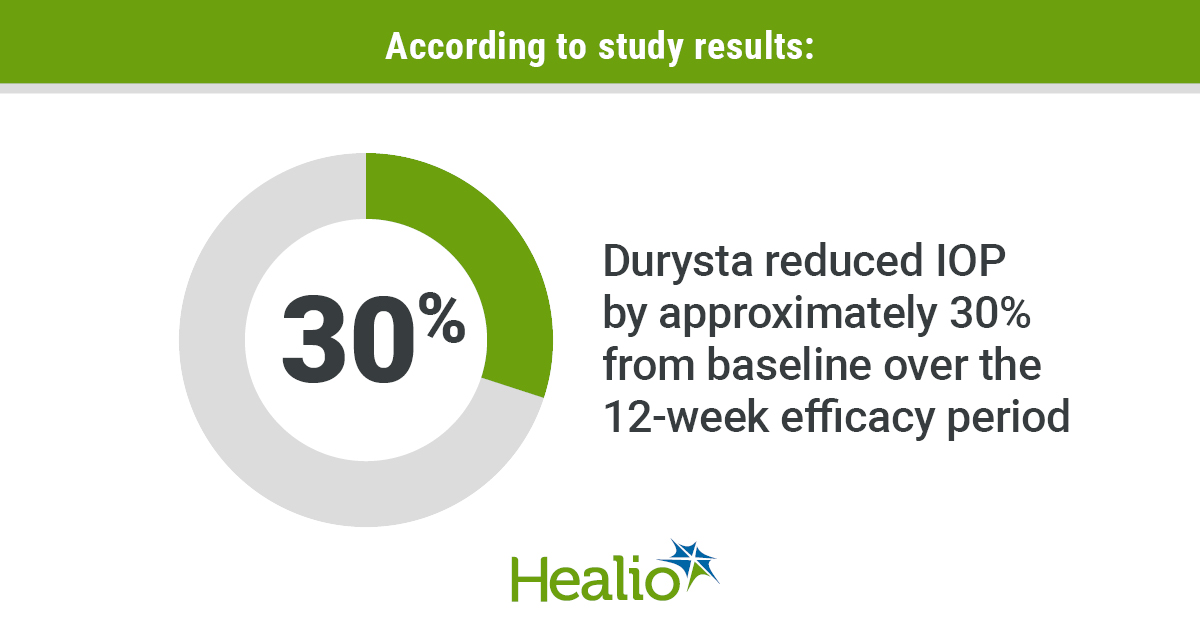Perspective: I. Paul Singh, MD, on the FDA approval of Durysta

The recent paradigm shift in the treatment of glaucoma moving toward earlier intervention, better managing patient compliance and a refocus on addressing the actual pathology continues to move forward with the approval of Durysta, a 10 µg bimatoprost implant for intracameral administration.
With this approval, Durysta (Allergan) becomes the first intracameral, biodegradable sustained-release implant indicated to reduce IOP in patients with open-angle glaucoma (OAG) or ocular hypertension (OHT).
The FDA approval is based on results from the two 20-month (including 8-month extended follow-up) phase 3 ARTEMIS studies evaluating 1,122 subjects on the efficacy and safety of Durysta vs. twice-daily topical timolol drops, an FDA-accepted comparator for registrational clinical trials, in patients with OAG or OHT. In the studies, Durysta reduced IOP by approximately 30% from baseline over the 12-week primary efficacy period, meeting the predefined criteria for non-inferiority to the study comparator.
To me, compliance is the biggest issue I face when medically managing our glaucoma patients. It is hard to keep patients on a topical medication while maintaining a high quality of life. This is why laser trabeculoplasty and MIGS have gained popularity. Medication nonadherence is actually recognized as one of the most important and costly worldwide health care problems. The only proven method of slowing the progression of glaucomatous optic nerve damage is to lower IOP, often with daily medications for an indefinite period of time, and progression is often linked to poor patient adherence. Nonadherence to glaucoma medications has been estimated to range from 24% to 59%; furthermore, in a study of claims data, 50% of patients stopped taking their medications within 6 months, and only 37% had their prescriptions filled 3 years after initial dispensing. For me, not having to ask the question, “Is my patient taking the drop?” adds more confidence in my treatment regimen and decreases the time my technicians will have to spend verifying patient compliance, refill needs and pharmacy calls.

What is also exciting about Durysta is the potential for “remodeling” of the trabecular meshwork and ciliary body by using a consistent and continuous 24-hour delivery of bimatoprost intracamerally at the site of pathology. In phase 1/2 trials, despite the implant being designed to reduce IOP for 4 to 6 months, many patients experienced sustained IOP lowering for much longer than 6 months, without requiring additional treatment. A single administration of Durysta controlled IOP in 40% of patients for up to 12 months and in 28% of patients for up to 24 months. Nonclinical pharmacokinetic studies in dogs have shown near-complete drug release and declining ocular tissue drug levels by 80 days after administration, with undetectable drug levels by the 4.5-month time point. Therefore, the duration of the IOP-lowering effect observed in many study eyes is unlikely to be due to continued drug presence.
Safety of Durysta is one of its key attributes and is why I believe this could be a treatment option for a wide variety of patients, from mild to more advanced disease. The majority of patients in the trials felt the procedure was straightforward and would recommend the implant to a friend. The implantation of the product is intuitive and can be performed in an office setting. The incidence of some adverse events typically associated with topical prostaglandin use was lower in the eyes treated with bimatoprost sustained release vs. eyes treated with topical bimatoprost, such as orbital fad pad loss, lash growth, lid changes and hyperemia.
It will also be interesting to see how physicians across the country decide to implement this technology. Doctors will need to establish a process for both billing and the procedure itself. Billing/coding will be paramount because offices will most likely buy the product and keep inventory to then bill out after each injection. The good news is that Durysta will be given a miscellaneous J-code and will fall under Medicare Part B, not Part D, which means we do not have to wait years to gain access to the medication. Part B reimbursement is also not dictated by Medicare Administrative Contractors (MACs) but rather by the manufacturer, so there will not be a difference in reimbursement between different MACs across the country, unlike newly approved stents and other surgical products that are given a T-code.
Similar to our retina colleagues, comprehensives and glaucoma specialists will have to decide on flow of the procedure. Some practices may decide to create “injection blocks” like we often do for lasers, or others may filter the injections throughout the day as they come. It will all depend on staffing, number of patients and surgeon preference.
I am truly excited for this product. It helps to round out our toolbox of procedures helping to reduce IOP while maintaining high quality of life that has eluded our glaucoma patients for years. I can see myself using Durysta in a variety of scenarios; a patient post-selective laser trabeculoplasty who has not achieved the desired IOP and weary of starting or adding drops, post-MIGS procedure when the goal is to try and get patients off the drops but could not quite get there with the MIGS procedure, or any patient who tells me they cannot remember their medication, cannot afford it or just cannot tolerate. Even if I can use Durysta to buy me some time before a surgical intervention, that is a benefit in my practice. Durysta is confirmation the future is bright for glaucoma management. Just like the disruption MIGS has caused, I do believe we are witnessing a similar disruptive technology that will spark even more innovation and challenge our definition of “standard of care.”
Inder Paul Singh, MD
Healio/OSN Board Member
Disclosure: Singh reports he is a speaker and consultant for Allergan.
